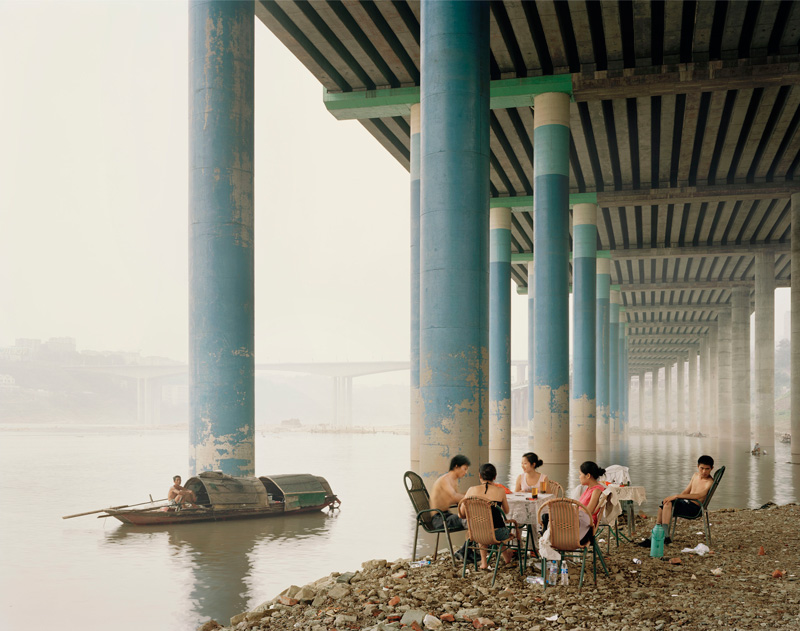- by Avery Shackelford

- Nadav Kander, Chongqing IV (Sunday Picnic) Series: Yangtze, The Long River, Chromogenic Colour Print 2006 Chongqing, China picture taken from: http://sites.asiasociety.org/coalandice/photographers/ , picture credit information taken from: http://www.prixpictet.com/2009/view/605/5211
An art exhibition open Sept. 24 – Nov. 28 at the renowned Three Shadows Photography Art Centre in Beijing features the works of 30 photographers hailing from across the globe including the United States, the United Kingdom, China, Norway, Russia, Italy, Canada, Malaysia and Germany.
These artists’ photographs tell a story from the base of the coalmine to the peaks of the Himalayas.
Photographs, including those taken by American photographer and filmmaker David Breashears, who co-directed the first IMAX film shot on Mount Everest, demonstrate how the use of coal emits greenhouse gases that are warming high-altitude climates like the Himalayas, where rapidly melting glaciers are affecting river currents, which in turn play havoc with the lives of downstream residents.
The photographs span an “arc” of phases showing how greenhouse gases resulting from coal use go up into the atmosphere causing the glaciers to melt, thus affecting the hydrologic cycle. The exhibition also includes time-lapse photos that show the changing landscape.
The goal of the exhibition is to promote environmental awareness as well as tell a beautiful, yet haunting visual story.
For more information, and to watch a behind the scenes video with commentary from the curators see the gallery’s Web site: http://sites.asiasociety.org/coalandice/

Hah! This place is actually my hometown. I used to run a kite by the Yangtze River where this picture is taken.
Hah. This city is actually my hometown. I used to run a kite by the Yangtze River where this picture is taken. It is extremely hot there in summer.
Effectively linking the lithosphere, atmosphere, hydrosphere, and biosphere Coal + Ice forces one too look and see the conditions of laborers working within the coal mines, how the burning of fossil fuels alters the composition of the atmosphere, then in turn these effects on the water flow off of the Himalaya Mountain Range, and finally the consequences for flora, fauna, and humans residing downstream. By involving photographers from around the globe Coal + Ice demonstrated how international of a concern climate change really is; however, by focusing the exhibition on coal and its environmental effects in China, the group effectively illustrated how the practices of a country have profound negative impacts on its citizens. Although the exhibition forced Chinese officials to see the effects of the burning of fossil fuels and not just ignore a written proposal by environmentalists… did the exhibition have any impact on China’s burning practices? or did it just beautify climate change?
Josef Albers once said that, “The role of art for me is the visualization of attitude, of the human attitude towards life, towards the world”. This statement can definitely be exemplified through the Coal+Ice exhibit in Beijing. This collection of art shows human’s interaction with the phyiscal world and envrionment in times of ecological distress. The photography page on the Coal+Ice websites gives an outline of each photographer whos work is shown at the exhibit. Here is the link: http://sites.asiasociety.org/coalandice/photographers/. The most shocking photos shown here are the ones that show the vast destruction that humans can have on the environment by clear-cutting mountains for coal and melting large glaciers through anthropogenic climate change. The other factor that makes some of these photos so profound is that they put a face to the people that are participating in large-scale coal mining. When I look at these photos I feel a sense of ambivilance because on one hand these people are trying to make a living to support their family, but on the other hand they are participating in an act that ruins the environment and has large reprecussions throughout the world. I feel that this gallery is important because it allows a different outlet of expression to the harms of global warming rather than the statistics that the public is constantly bombarded by.